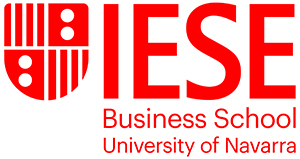Your words aren’t as important as the conviction, passion and energy behind them, as Mark Twain used to say. When delivering a speech, your non-verbal communication is at least as important – if not more – than what you actually say. When used well, body language is a powerful tool that can help you gain credibility and persuade your audience.
First step: having something of value to convey
A good command of public speaking and staging will enable you to persuade and convince by honestly and effectively communicating with your audience. That said, it’s important to note that there are no hard-and-fast rules about the best posture to strike, what to do with your hands or how to visually connect with your audience.
According to Prof. Conor Neill of IESE’s Department of Managing People in Organizations, good public speaking is about transmitting authority and energy in a way that reinforces the spoken message and connects with audiences.
Having something of value to convey is the cornerstone of a good speech, which is why speakers should worry less about their hand gestures and more about whether they truly believe in their message. “When you connect with the ‘what’ of your message, your voice, gestures and expressions reflect and reinforce your ideas,” says Prof. Neill.
Second step: how to expose properly
Deciding on the “what” is followed by another critical component: the “how.” Delivering a high-impact speech requires practice, practice, practice. Think about it: when concert pianists take the stage, they never perform a musical composition for the first time. On the contrary, hours and hours of dedicated practice are behind every piece. Why don’t we do the same before delivering a speech? Why not practice our public-speaking skills before stepping in front of the podium?
Third step: the intensity
The intensity of our delivery is another core element that directly impacts the final outcome. You have to be crystal clear on the most relevant component of your message and keenly aware of the “emotional contagion” you hope to spread.
The last ingredient: deep knowledge of your audience and the capacity to read the room. What is your audience truly interested in? What would motivate them and persuade them to take action?
Having something to say, saying it well, using the right intensity and connecting with your audience. In a nutshell, these are the four core pillars of a high-impact presentation, an ability that every global manager should have in their skillset.
Communication Skills That Empower Your Leadership is a highly dynamic three-day program designed for managers who aspire to communicate effectively in a variety of contexts and capture the attention of their audience.
















